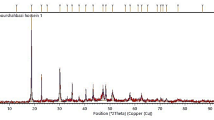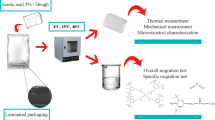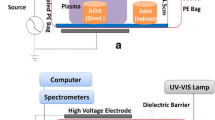Abstract
The aim of this study was to investigate the effect of various parameters on the stability of butorphanol tartrate injection and to screen the optimal packaging material. The effect of the headspace oxygen levels, ampoule color, manufacturer, and size on the stability of butorphanol tartrate formulation were evaluated. The headspace oxygen levels controlled by nitrogen purging were found to be particularly effective in improving stability of the butorphanol formulation, especially below 2%. Although it is a photolabile drug, butorphanol tartrate was getting degraded at much higher extent in amber color ampoules in comparison to clear ampoules. The degradation by oxidation was found to be a free radical-mediated process catalyzed by the presence of iron ions leached from the amber ampoules. The ampoule manufacturers also had a significant effect on the stability of butorphanol. Two-milliliter ampoules provided a better stability of the butorphanol tartrate injection than 1mL ampoules as 2-mL ampoules had the lower headspace oxygen level at the same level of oxygen content. The oxidation mechanism of the butorphanol tartrate injection was investigated under various conditions, which include iron powder spiking, removal of excipients, exposure to oxygen/nitrogen, exposure to stainless steel and at different pH. Iron powder spiking, presence of citric acid, exposure to oxygen, exposure to stainless steel, and high pH accelerated the oxidative degradation. The effect of oxygen, iron ion and citric acid is in agreement with a metal-catalyzed oxidation mechanism called Udenfriend reaction. Based on the formulation test results, limiting headspace oxygen level, ampoule color, manufacturer, size, controlling iron ion contamination, and pH are recommended for formulation development. In conclusion, it can be suggested that this study can lead to a better understanding of the degradation mechanism of butorphanol tartrate; hence, it would contribute to the development of butorphanol tartrate injection with improved stability.
Graphical abstract

Virous packaging materials have different effects on the stability of butorphanol tartrate injection, and the leached iron of packaging ampoules and stainless steel can trigger Udenfriend reaction with butorphanol tartrate and citric acid (CA), which lead to the oxydative degradation of butorphanol tartrate injection.








Similar content being viewed by others
Change history
28 July 2021
A Correction to this paper has been published: https://doi.org/10.1208/s12249-021-02077-9
References
Sacha GA, Saffell-Clemmer W, Abram K, Akers MJ. Practical fundamentals of glass, rubber, and plastic sterile packaging systems. Pharm Dev Technol. 2010;15(1):6–34.
Best practice guidance on labelling and packaging of medicines. Medicines and Healthcare Products Regulatory Agency. 2009. http://europepmc.org/article/HIR/30361.
Akala EO. Effect of packaging on stability of drugs and drug products: Wiley; 2010.
Nema S, Ludwing JD. Pharmaceutical dosage forms - parenteral medications. 3rd ed: Informa healthcare; 2010.
Borchert SJ, Ryan MM, Davison RL, Speed W. Accelerated extractable studies of borosilicate glass containers. J Parenter Sci Technol. 1989;43(2):67–79.
Gura KM. Aluminum contamination in products used in parenteral nutrition: has anything changed? Nutrition. 2010;26(6):585–94.
Pillai S, Sumitra AP, Dhawal C, Dileep U, Nagasuri R. Pharmaceutical glass interactions: a review of possibilities. J Pharm Sci Res. 2016;8(2):103–11.
Iacocca RG, Allgeier M. Corrosive attack of glass by a pharmaceutical compound. J Mater Sci. 2007;42(3):801–11.
Monkovic I, Conway TT. Total synthesis and pharmacological activities of N-substituted 3,14-dihydroxymorphinans. J Am Chem Soc. 1973;95(23):7910–2.
Pallasch TJ, Gill CJ. Butorphanol and nalbuphine: a pharmacologic comparison. Oral Surg Oral Med Oral Pathol. 1985;59(1):15–20.
Dunteman E, Karanikolas M, Filos KS. Transnasal butorphanol for the treatment of opioid-induced pruritus unresponsive to antihistamines. J Pain Symptom Manag. 1996;12(4):255–60.
Jaw SP, Hoskins B, Ho IK. Opioid antagonists and butorphanol dependence. Pharmacol Biochem Behav. 1993;44(3):497–500.
Stenkamp RE, Teller DC, Palczewski K. Crystal structure of rhodopsin: a G-protein-coupled receptor. Chembiochem. 2002;3(10):963–7.
Commiskey S, Fan LW, Ho IK, Rockhold RW. Butorphanol: effects of a prototypical agonist-antagonist analgesic on kappa-opioid receptors. J Pharmacol Sci. 2005;98:109–16.
Fan LW, Tien LT, Tanaka S, Ma T, Chudapongse N, Sinchaisuk S, et al. Changes in the brain κ-opioid receptor levels of rats in withdrawal from physical dependence upon butorphanol. Neuroscience. 2003;121(4):1063–74.
Abboud TK, Moore M, Zhu J, Murakawa K, Minehart M, Longhitano M, et al. Epidural butorphanol or morphine for the relief of post-cesarean section pain: ventilatory responses to carbon dioxide. Anesth Analg. 1987;66(9):887–93.
Monassier L, Bousquet P. Sigma receptors: from discovery to highlights of their implications in the cardiovascular system. Fundam Clin Pharmacol. 2002;16(1):1–8.
El-Hawary WF. Determination of lignocaine and amprolium in pharmaceutical formulations using AAS. J Pharm Biomed Anal. 2007;27:97–105.
Enever RP, Li WPA, Shotton E. Factors influencing decomposition rate of amitriptyline hydrochloride in aqueous solution. J Pharm Sci. 1977;66(8):1087–9.
Mendenhall WD. Stability of Parenterals. Drug Dev Ind Pharm. 1984;10(8&9):1297–342.
Reed RA, Harmon P, Manas D. The role of excipients and package components in the photostability of liquid formulations. PDA J Pharm Sci Technol. 2003;16(5):351–68.
Smyk B, Piotrowicz-Cieslak AI, Grajek H, Rydzynski D, Margas M, Wasilewski J, et al. Influence of light and Fe(III) ions on tetracycline degradation. Spectrochim Acta A Mol Biomol Spectrosc. 2019;216:273–82.
Udenfriend S, Clark CT, Axelrod J, Brodie BB. Ascorbic acid in aromatic hydroxylation: I. A model system for aromatic hydroxylation. J Biol Chem. 1954;208(2):731–9.
Lim G, Monkovic I. Process for the preparation of 14-hydroxymorphinan derivatives. US4139534. 1979.
Hong J, Lee E, Carter JC, Masse JA, Oksanen DA. Antioxidant-accelerated oxidative degradation: a case study of transition metal ion catalyzed oxidation in formulation. Pharm Dev Technol. 2004;9(2):171–9.
Tiebang W, Jane W, Hartman R, Xiujuan J, Richard SE. A multi-element ICP-MS survey method as an alternative to the heavy metals limit test for pharmaceutical materials. J Pharm Biomed Anal. 2000;23:867–90.
Won DH, Park H, Ha ES, Kim YM, Hwang HD, Jang SW, et al. Effect of formulation factors and oxygen levels on the stability of aqueous injectable solution containing pemetrexed. Pharmaceutics. 2020;12(1).
Waterman KC, Adami RC, Alsante KM, Hong J, Landis MS, Lombardo F, et al. Stabilization of pharmaceuticals to oxidative degradation. Pharm Dev Technol. 2002;7(1):1–32.
Li M, Carlson S, Kinzer JA, Perpall HJ. HPLC and LC-MS studies of hydroxylation of phenylalanine as an assay for hydroxyl radicals generated from Udenfriend's reagent. Biochem Biophys Res Commun. 2003;312(2):316–22.
Ko KM, Yick PK, Poon MKT, Ip SP. Prooxidant and antioxidant effects of trolox on ferric ion-induced oxidation of erythrocyte membrane lipids. Mol Cell Biochem. 1994;141(1):65–70.
Freed AL, Strohmeyer HE, Mahjour M, Sadineni V, Reid DL, Kingsmill CA, et al. pH control of nucleophilic/electrophilic oxidation. Int J Pharm. 2008;357(1-2):180–8.
Author information
Authors and Affiliations
Corresponding authors
Additional information
Publisher’s Note
Springer Nature remains neutral with regard to jurisdictional claims in published maps and institutional affiliations.
The original online version of this article was revised to add Haoxiang Wu as a corresponding author.
Rights and permissions
About this article
Cite this article
Dai, Z., Zhu, C., Liu, C. et al. Effect of Packaging Materials and the Leached Iron on the Stability of Butorphanol Tartrate Injection. AAPS PharmSciTech 22, 186 (2021). https://doi.org/10.1208/s12249-021-02060-4
Received:
Accepted:
Published:
DOI: https://doi.org/10.1208/s12249-021-02060-4




